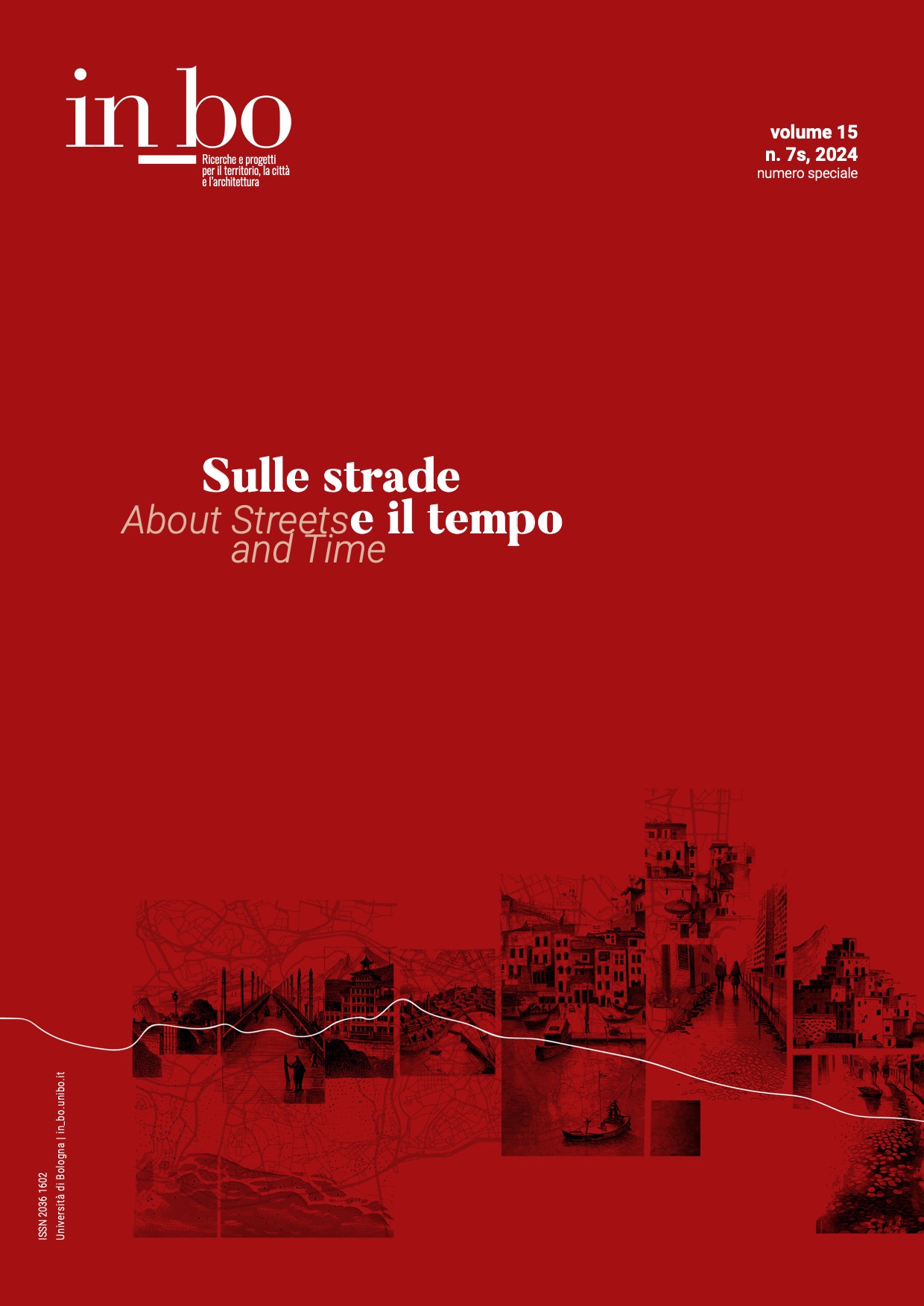Streets Love Aqueduct: Águas Livres Aqueduct in Lisbon
DOI:
https://doi.org/10.6092/issn.2036-1602/20414Keywords:
aqueducts, Aqueduto Águas Livres, Built environment, monumentalization, infrastructureAbstract
Streets and aqueducts relationship in Europe is a detectable pattern. With a shared linear condition, these encounters between infrastructures occur in different ways, from their absolute alignment to their unexpected intersection. Arches, stones, facades, people, details, shadows and other actors together explain useful stories for architectural design.
Through the case study of the Aqueduto das Águas Livres and its relationship with the streets of Lisbon, it is possible to get a wide range of different meeting casuistry. The movement of the aqueduct plays a characteristic and fundamental role in the physiognomy and configuration of the city’s streets, as well as of the built environment. From great monumental moments to more modest locations, different displays allow us to approach the urban and architectural richness that occurs in the conjunctions between street and aqueduct. In that sense, thanks to its variety, Lisbon is a place that gives a catalogue, from specific and exceptional situations to urban scenarios comparable to other European cities.
Aqueducts, as more than streets for water, materialize in an infrastructural body that conditions the configuration of the streets with which they meet. Because of the effects that they entail along the time and beyond the architectural aspects – from tangible to intangible dimensions – it is important to consider these encounters between infrastructures as a valuable field of design for the city.
Downloads
Published
How to Cite
Issue
Section
License
Copyright (c) 2024 Pablo Villalonga Munar

This work is licensed under a Creative Commons Attribution-NonCommercial 4.0 International License.





